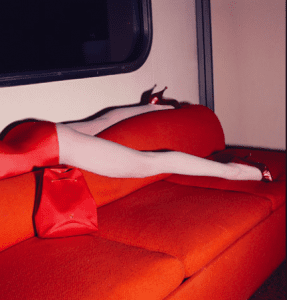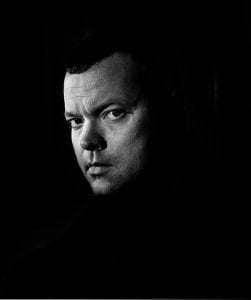Summary of the post:
- What semiotics is
- The difference between denotation and connotation
- Why it is important to understand it when creating projects
- Analysing my own images
Semiotics, simply put, is the study of signs and symbols. To study semiotics, you must be able to know how to decide the meaning of their use and interpretation, or denotations and connotations. Such specific images, or even words, can help us provide meaning about both our social and natural environment. As quoted by Ferdinand de Saussure, Swiss linguist and semanticist, (1857-1913):
“The role of signs as part of social life”.
This quote is also referenced in many texts, including “The Continental Philosophy Reader” (Kearney, 1996), in which he followed on from the quote, expressing that it would “form part of a social psychology, and hence of general psychology” (Kearney, 1996: 298), forming the word “semiology”.
To denote something is to look at what you see, or to see its literal form. When it comes to denotation, as a whole it must come to the conclusion that there is a simple meaning. For example the denotation of a sign is that it is simply a sign, or even as simple as a line and a square, circle etc depending on its shape; it is reduced to its literal form.
What is the content of the photographic message? What does the photograph transmit? By definition, the scene itself, the literal reality” (Barthes, A Barthes Reader 1975: 196)
To connote something, however, is to figure out its meaning, or its codes. As society has grown and cultures have changed, meanings of certain objects have become recognisable. For example a sign could be a stop sign, and therefore it connotes a person to stop.
‘The imposition of second meaning’ (Barthes, 1980)
As cultures and society changes and evolves, it is important to make your understandings of denotations and connotations clear in specific projects, especially when it comes to advertisement. Mise-en-Scene is significant when it comes to semiotics, without it there is no real significance, or meaning to the image, or video. When analysing the connotations, or the signifiers, the specific ways in which the mise-en-scene is used helps the audience, or the spectator identify the specific meanings, through codes and conventions; when you know the cultural meaning of the specific codes and conventions used through the mise-en-scene, the image or video becomes clearer to the spectator. Some of these techniques include:
- Camera height and camera angles – depending on where the camera is set, immediately helps determine the meaning of a specific subject. If the camera is at a high angle, it usually connotes the subject is weak and the audience, or spectator are stronger. If the camera is at a low angle, it signifies the subject is more powerful and the spectator, weak.
- Costume, hair and makeup – This is considered one of the most significant features within mise-en-scene to help truly identify the codes and conventions to bring the meaning of an image or video together. Even without lighting and camera angles (cinematography), as many people are aware of the “stereotypes” within such codes and conventions, the audience or spectator will get a good idea as to who the subject is, what time era it is, and even their background. For example, a man in a suit, with slick hair and a tidy, smart look connotes that he may work in an office, or somewhere of a high professional outlook. However, a girl with scruffy clothes, hair and makeup used correctly, such as the addition of dark circles under the eyes, connotes that she may be homeless, or under poor living conditions.
- Lighting – different kinds fo lighting help indicate how powerful or weak a subject is also. However, it can often require a lot more context, or other elements of mise-en-scene to help determine the meaning of the overall image or scene. For example low key lighting can often connote power and weakness, though mostly under a negative light. Depending on the camera angle, costume and other mise-en-scene elements, it can often become difficult to understand the codes and conventions, unless these other areas are clearer. For example certain costumes, hair and makeup style will determine the true meaning, due to its specific codes and conventions.
- Facial expressions – As simple as it may seem, facial expressions actually require codes and conventions to understand. How would you tell if someone was sad? They would frown, or there would be tears, or even a poor body posture. Without this cultural knowledge, as well as for everything mentioned above, you would not know how someone was feeling. An example that David Bates used in his book “Photography: The Key Concepts” (2009):
“We recognise these basic symbols as ‘happy’ and ‘sad’ as ‘facial expression’, despite the fact that they are an almost completely abstract code. They indicate how simple and complex the ‘face’ and its arrangements of the eyes and mouth can be as ‘expressions’ to connote mood”. (p. 35).
Other signifiers often include use of colour, texuture, symmetry, tone and focus, things that are often important, but tend to branch off of the features listed above.
Below I have picked three photos, two I have researched and one of my own.

This photo was taken and created by Guy Bourdin (1978), who based this image on the colour red. As red often connotes several meanings, including love, lust, anger and rage, it is clear that further inspection is needed to help truly identify the meaning of the photo. One key element is the contrast of the bright red against the pale, skin coloured wall and the bare legs. The colours correlate, and help further enhance the look of the legs, and next to the fact that her positioning is considered “sexy”, and only the bottom half of the woman’s body is visible, the signifiers come together, connoting that this image is almost considered that of a pornographic style. However, though less likely, it can often be connoted as fashion photography, as it is still the outfit that she is wearing that is most visible, therefore helping it stand out, especially against the pale wall. However, despite the connotations, this image is in fact a fashion photo, made to be published for Vogue magazine, expressing that photos, despite having a specific meaning, can often be viewed in many different ways, depending on the culture that one may have grown into.


Bates, D. (2009) Photography: The Key Concepts, BERG, 1st edition
Kearney, R. (1995) The Continental Philosophy Reader, Routledge, 1st edition
Item 3 (1976) Guy Bourdin [image]. Available from
http://www.vam.ac.uk/content/articles/p/guy-bourdin-exhibition/ [accessed on 26th October 2018]
Item 4 (1951)Orson Welle, 1951 [image]. Available from
https://www.theguardian.com/artanddesign/picture/2014/jan/29/orson-welles-photography [accessed on 26th October 2018]




Leave a Reply